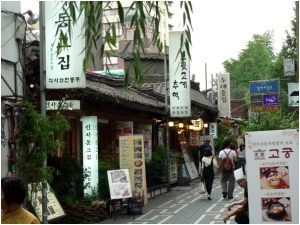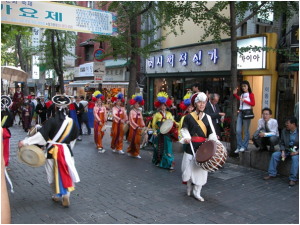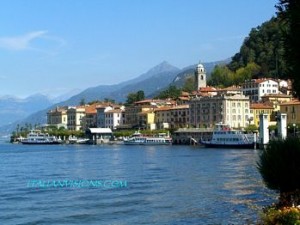Italian Art
Did you know that 75% of the international artistic property of the world is in Italy?
In Italy you will find art works from 3000 years ago up to now. It seems unbelievable but it is true.
Italy saw art changing during the time. From Roman buildings and works, to Middle Age beauties and up to the modern and contemporary master-works.
COLOSSEO or TORRE DI PISA (the leaning tower) are only a couple of examples known by everybody as for Italian artistic expression. Italian cities are like museums: you will get lost among the beauty of their old squares, ancient streets and famous buildings. You will be impressed by the art of painting as well: churches, palaces and all important buildings (both now and in the past) are covered by art: wall paintings, fresco paintings and many others will give you the sensation to go back of ages.
For those who love art, Italy is the best place to go to have a great meeting with.
Italy is full of art and its language is form of art, too. Italian language has got a sound and music inside itself that makes it one of the most beautiful master-work of the world!
Italian fashion
Where do GUCCI, ARMANI, VERSACE and many other brands come from? ITALIA. They are Italian designers known everywhere because of their style, elegance and mark.
How can you easily recognize people coming from Italy? Definitely from the way they are dressed. Impeccable, elegant and in fashion all the time. That’s Italy and these are Italians.
You may think fashion is a kind of obsession for Italian people but it is not. It is a part of their way of being, of their way of thinking. Be in fashion means to take care of one’s body and appearance, to express one’s likes and dislikes. To show one’s personality. It is the inner personality that comes out.
To better understand Italian personality you should know something more about it. Learn Italian could combine you interest in fashion and Italy with the elegance of the most dressed up language of the world!
Italian Music
Luciano Pavarotti, Andrea Bocelli, Laura Pausini are only some of the most famous Italian singers.
Italian Opera, that is to say music + singing + acting together, started to spread in 1500. Italy is considered the mother land of Opera and it is still the most prestigious country where singers and musicians come to study music.
Know Italian language can be very useful while studying music: the technical terms and directions as for Opera are still in Italian, no matter in which country people are learning to play a music instrument, to sing or to read music. Moreover many Operas were born in Italian and are always performed in the original language.
Children usually start learning a second language through songs because we believe that music may be a funny and simply way to get involved into a different language.
But why don’t we take into consideration the same idea for adults as well? Music might be a great starting point to appreciate and love Italian language! And don’t forget that Italian language has got a sound and music inside itself already.
Italians love sport!
Italian sport comes immediately after food. Italians love sport, they like doing sport but they prefer watching it! What is Italians favorite one? Football! Italian CALCIO…
Football was born in England and came to Italy in the late 1800 but it immediately had a wide success. In few years many of the most famous football clubs were set up such as Juventus (1898, black and white t-shirt) and Internazionale Milan (1908, blue and black t-shirt), usually known as Inter.
Italian football teams and players are among the most famous and excellent of the world. Everybody knows at least something about Italian football and about Italian successes (many times Italian teams won Champions Leagues and recently, in 2006, the National Italy football team won the World Cup).
But football is not the only one: Italy excels for skiing, swimming and many others. Italians are simply keen on sports.
When you are keen on something it is easier to be interested in what goes around it. For those who love sport, boning up on Italian language could be a funny way to train your tongue!
Who doesn’t love Italian food?
“I fell in love with the food and then I fell in love with the language”.
Many people say it while talking about Italian language.
When people think of Italy the first thing that comes into their mind is definitely the food! PIZZA, SPAGHETTI, MOZZARELLA and many others. Although people cannot speak Italian they can certainly pronounce these words, sometimes properly and some others in a funny way. But they never try to translate it, because the quality of a food tradition is not translatable in other languages and cultures.
Food is a part of Italian culture and tradition. The good quality of Italian food has travelled during the time together with the language that has spread abroad thanks to the successfulness of the cooking.
Learn Italian and love Italian food are two good reasons to plan a journey to Italy and to meet the most delicious language ever!
Learning Italian: a Way to Go Through European Culture and History
European history is one the most ancient all over the world. 2700 years ago Romans settled in Italy, built Rome and conquered most part of Europe, part of Asia and part of Africa. They were the first ones in spreading Italian culture, traditions and language.
The Roman Empire was great: Romans were excellent constructors, politicians, lawyers and soldiers. The language spoken by Romans was Latin, the old form of current Italian, a dead language today but still alive because people continue to be interested in it. It is taught in European schools as it is the foundation of many languages (such as French, Spanish etc.).
Italian history and language are strictly linked: language has changed during the time, from place to place (from Latin into Italian, French, Portuguese and many others) and it would be a great experience to study such an old language.
The better you know a language the better you’ll understand its story and culture.
Insa-dong (인사동): A must-see in Seoul, Korea
Insa-dong (인사동) is a must for Seoul tourist. To experience the traditional culture of Korea while staying in Seoul, visit Insa-dong. Insa-dong Street is one of the most memorable landmarks to represent you Korean traditional crafts and culture. With art galleries, traditional craft stores, antique art shops, traditional tea cafes and restaurants, it should be everything for visitors wanting to experience real Korean traditions. Especially, stores in Insa-dong are good for a wide kind of antiques-old paintings, antique furniture, ceramics, paper crafts, hanbok (한복/ traditional clothing), hanji (한지, traditional paper), and folk crafts can all be found in abundance.
Insa-dong Street stretches over 700 metres between the Anguk-dong Rotary (안국동 로터리) and Tapgol Park (탑골 공원). It is a quite long street. The art galleries (Insa Art Gallery, Dong Duk Art Gallery, Gana Art Space, Insa Art Centre…) in this area also make Insa-dong ideal place as a Korean cultural attraction. In 1999, Queen Elizabeth II visited the area and expressed deep admiration for the hanbok(한복/ Korea’s traditional dress) and for Korean pottery in particular. On weekends, the street is vehicle-free and flea markets are set up. Travelers from abroad also join the flea market with various goods from all over the world. So you could enjoy multicultural goods and events there.
Insa-dong creates unique atmosphere which is mixed up Korean traditions and young energy. Do not miss souvenir shops in Insa-dong. You could purchase Korean traditional souvenirs for your family and friends at a reasonable price. You can have help from the Insa-dong Information Centre (Tel: 82-2-737-7890) located 100m from Ssamjigil (쌈지길) toward Jogyesa Temple (조계사). The centre provides tourism information, interpretation services and free internet access.
By Sarah Yong (Korean teacher)
Some stories about our Japanese Courses 9
Hi everyone,皆さん、おげんきですか。
My Japanese classes and lesson include the following features. We had activities of speaking, reading, listening, writing, (esp. in group lessons) making and performing dialogues or speech with use of the course book, “Genki 1”, its grammar and vocab. of the Unit taught and its Workbook. Some students (esp. in the class of Beginners 1) made and memorized for one’s long speech or dialogue and that was very impressive.
As for reading and increase of vocab., grammar and plain forms, I read (and asked students read partly) a children’s books written in Japanese. The books have many colorful, informative, natural and beautiful photos and useful phrases, plain forms and other vocab. One was a book of “mochitsuki” (rice cake making by pounding cooked rice and the practice is yearly and nationally seen and practiced as Japanese people’s family/community activity late in December, before the New Year’s arrival. The book has details of the activities and scientific analysis of rice that is used for “mochitsuki”, which differs from ordinary rice used for daily meals in Japan. Also I read a book on “shimarisu” (stripe squirrels in Japan) to classes.
In most of all classes except the Intermediate 1, I showed the videos of “Wakuwaku Hiragana”, vol, 1 and 2. They have great presentations while introducing stroke orders, vocab. things that the script can be related in shape, many words that the script is used for, lovely animations, music and humors. Very suitable for anyone to watch and improve in writing those letters and increase vocab.
I taught Japanese “rajio-taisoo” (NHK’s daily radio exercise program, its physical exercise, cassette tape) to classes. (I’d taught this in Japanese classes many times in the past and many students, both children and adults enjoyed that.) Japanese people are expert of consistency, in many ways. The NHK radio program must have been on every morning for over half of a century and practiced in all primary schools and many other places (including car manufacturers every morning as the corporate activity) throughout Japan. My students of SLS responded to the tape and exercise, so I will continue having that activity occasionally in future too.
The class of Intermediate 1 (and newly started Beginners 2) are using “Kanji-no Hon” (by K. Aitchson, 2001, MacMillan) for Kanji acquisition. New students of Beginners 2 expressed that they wish to start Kanji instead of waiting for that until they reach the Pre-Intermediate 1. So, the class will have Kanji learning occasionally.
Beginners 1 that finished recently and those students (plus new students) started Beginners 2 recently. Those who finished and had my exam (that included Listening Test) did greatly with very impressive performance/attitude. Many congratulations to them!
Regarding culture, society and nature of Japan in recent media news and other resources used, as before, I showed a dvd, “Pilot Guides – Tokyo” (Tokyo City Guide) presented by highly recognized British presenter, Ian Wright, to new classes or students.
In addition, I informed of the article “High and mighty small” by L. Slattery, Wish, The Australian (4.5.12). That is about 2 distinctive and creative architects of Japan. One, Shigeru Yoshiko is the architect/designer of the world’s tallest media tower, Tokyo Sky Tree and the master of making the tall building. The other is Koji Tsutsui. He is the master of the small. He designed InBetween House near to Tokyo and who was a guest speaker at the conference in Australian Inst. of Architects in Brisbane last month (p. 48). Together they represent two faces of Japanese architecture (p. 48). Fascinating people and works!
Also, I reported and showed many great news and pictures from Japan that are in a magazine Jenta (25.5). They include the following. Aoi Festival in Kyoto in which 500 participants wear the Heian period (794-1185) costumes of noble people with carts etc. And Honda’s new personal mobility device (kind of chair and vehicle) and car navigation displays information shown on windshield that is amazing/smart technology that can appear in a Hollywood movie!). The magazine also shows or describes the historical side of Japanese people’s favorite, “onsen” in depth and the pictures, a 73-year-old Ms Tamae Watanabe who conquered Mt. Everest as the world’s oldest female, and information of many gorgeous natural mountains, waterfall, the village of the Edo Period style in Nagano etc.
Japanese Teacher, Toshiko Jackson
4.6.12
Learning Italian: Cultural Heritage
Lake Como
Italian language is spoken by over 70 million of people living in Italy but it is alive across the world thanks to other 70 million of Italians living abroad (especially in America and Australia). We could say there is “another Italy outside Italy”.
In Australia there are many people with Italian origins (about 200.000 people who are now in Australia were born in Italy; about 850.000 were born in here but speak Italian as second language at home) and many of them would like their children/grandchildren to carry on their language, culture and tradition.
Somehow Italian language and culture is a part of Australia and nowadays Italian is one of the most spoken languages in this country, too. In schools it is the second most taught language after Chinese. It is a heritage to be carried on and to be maintained.
Italians brought an important contribution to Australia: they came here to work but in the meanwhile they were able to export their food, their way of constructing buildings, their style.
The so called “made in Italy” is famous all over the world. And learning Italian is a way to go through it and discover the beauty of one of the oldest language ever.
• European culture and history
• Italian sport
• Italian music (opera)
• Italian fashion
• Italian food
• Italian art
• The beauty of a language
• The importance of learning a second language (different from English family)
• It is easier to learn a similar language (French, Spanish etc.)
• Italian cinema
Using the question word “where” in Indonesian
A lot of things in Indonesian are (arguably) much simpler than English. Many questions words that we have in English are simplified into 1 question word in Indonesian. However, Indonesian treat the question word “where” much differently.
There are 3 kinds of “where” in Indonesian language. First one is ke mana (to where), second one is dari mana (from where), and last one is di mana (at where). All of them must be used at the right time.
If you are talking about going to somewhere else, you will use ke mana. For example: Besok kamu mau pergi ke mana? (Where will you go tomorrow?)
If you are talking about coming from somewhere, you will use dari mana. For example: Kamu berasal dari mana? (Where do you come from?)
If you are talking about staying at a place, you will use di mana. For example: Kamu tinggal di mana? (Where do you live?)
To sum up, there are 3 kinds of “where” in Indonesian language. Use them correctly!







Latest Comments